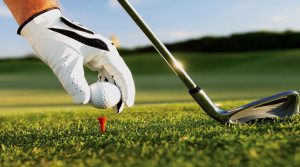
5 Tips Hitting Fairway Woods
Fairway woods are problematic for many high-handicap golfers. They enjoy using these clubs, but the results are often uninspiring. While it is possible to hit the ball a long distance with a fairway wood, it is also possible to hit a ball that veers a long way off course – into rough or water or sand!
The fairway woods are all the woods numbered higher than 1 (the 1-wood is the driver). Most golfers carry a 3-wood in their bag and some also carry a 2-wood or 5-wood (among others). Note that, in this era, most of these clubs called “woods” are no longer made of wood. Rather, they are made of metal. The term “woods” is retained to distinguish these clubs from irons – the woods still have a much larger clubhead and a different design.
Here are five tips for hitting better shots with your fairway woods.
1. First, be cautious about selecting this club. Many golfers use fairway woods more often than they should. Keep in mind that they should not be used when accuracy is paramount. If the area of the fairway that you’re aiming at is bounded by hazards, or if you’re shooting for a green that is protected by a hazard, you probably should avoid selecting a fairway wood. Also, remember that fairway woods require that your ball have a good lie. If your ball is in a depression in the turf or in deep rough, you should not choose these clubs.
2. Ball placement varies according to loft. When you are using a low-numbered fairway wood (the 2-wood or 3-wood), the best ball position for most golfers is one or two ball-lengths inside the left heel (for right-handed golfers). However, for higher-numbered woods (the 4-wood and higher), the best ball position is closer to the center of the stance. Because of the higher degree of loft on the higher-numbered woods, the ball can be positioned closer to your normal placement without compromising the height achieved.
3. When using the fairway wood in the rough, it is okay to tamp down any high grass directly in front of your ball with the clubhead of the fairway wood. Since (as was mentioned in Tip #1) you need a good lie to use one of these clubs, it’s not a good idea to attempt using a fairway wood if there is thick, tall grass directly in the path of your clubhead. It is within the rules of golf to tamp down the grass with the club, as long as you don’t make contact with the ball.
4. Don’t swing with 100 percent of your strength. Rather, swing comfortably and smoothly at roughly 75 percent of your strength, and let the clubhead do its work. These clubs are designed for long yardage, so you don`t need to overexert yourself to achieve that. It is more important to swing in a precise, controlled manner, so that you hit the ball with the sweet spot of the clubhead.
5. Don`t try to “scoop” the ball. The clubhead should make contact with the ball at the end of your downswing. In other words, the clubhead should still be descending at the point where it strikes the ball; and the lowest point in your swing arc should be an inch or so past the ball. While this may seem counterintuitive, the loft on the clubface causes the ball to fly into the air even as it is being driven downward by the direction of the clubhead.
Following these instructions will result in fairway woods shots that actually contribute to a lower score. Certainly that’s the ultimate test of the usefulness of any club in your golf bag!



